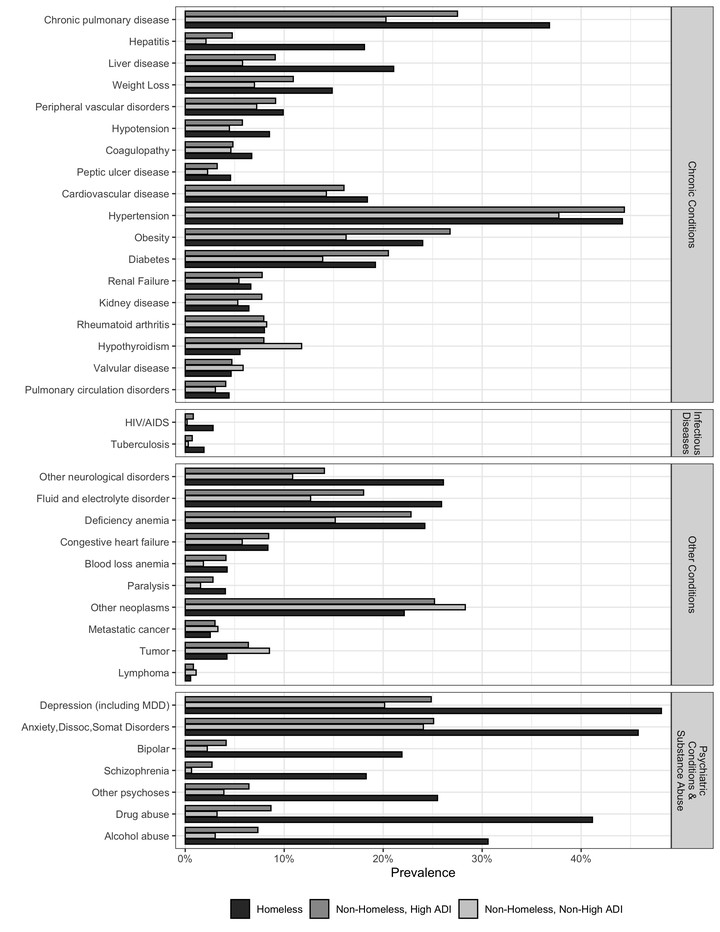Health Status and Chronic Disease Burden of the Homeless Population: An Analysis of Two Decades of Multi-Institutional Electronic Medical Records

Abstract
Using a multi-institutional EMR registry, we extracted housing status and evaluated the presence of several important comorbidities in order to describe the demographics and comorbidity burden of persons experiencing homelessness in northeast Ohio and compare this to non-homeless individuals of varying socioeconomic position. Of 1,974,766 patients in the EMR registry, we identified 15,920 (0.8%) as homeless, 351,279 (17.8%) as non-homeless and in the top quintile of area deprivation index (ADI), and 1,607,567 (81.4%) as non-homeless and in the lower four quintiles of area deprivation. The comorbidity burden was highest in the homeless population with depression (48.1%), anxiety (45.8%), hypertension (44.2%), cardiovascular disease (18.4%), and hepatitis (18.1%) among the most prevalent conditions. We conclude that it is possible to identify homeless individuals and document their comorbidity burden using a multi-institutional EMR registry, in order to guide future interventions to address the health of the homeless at the health-system and community level.